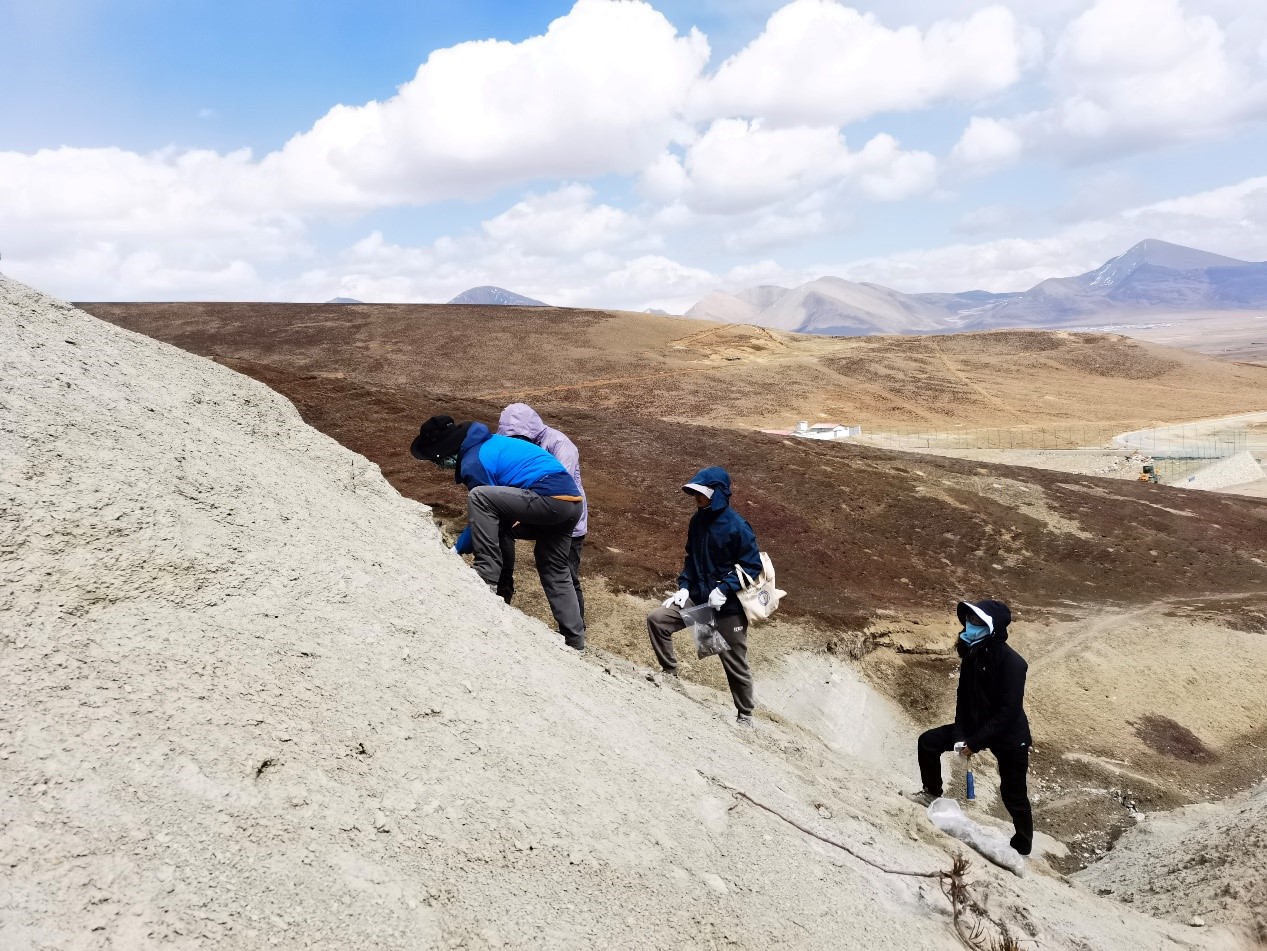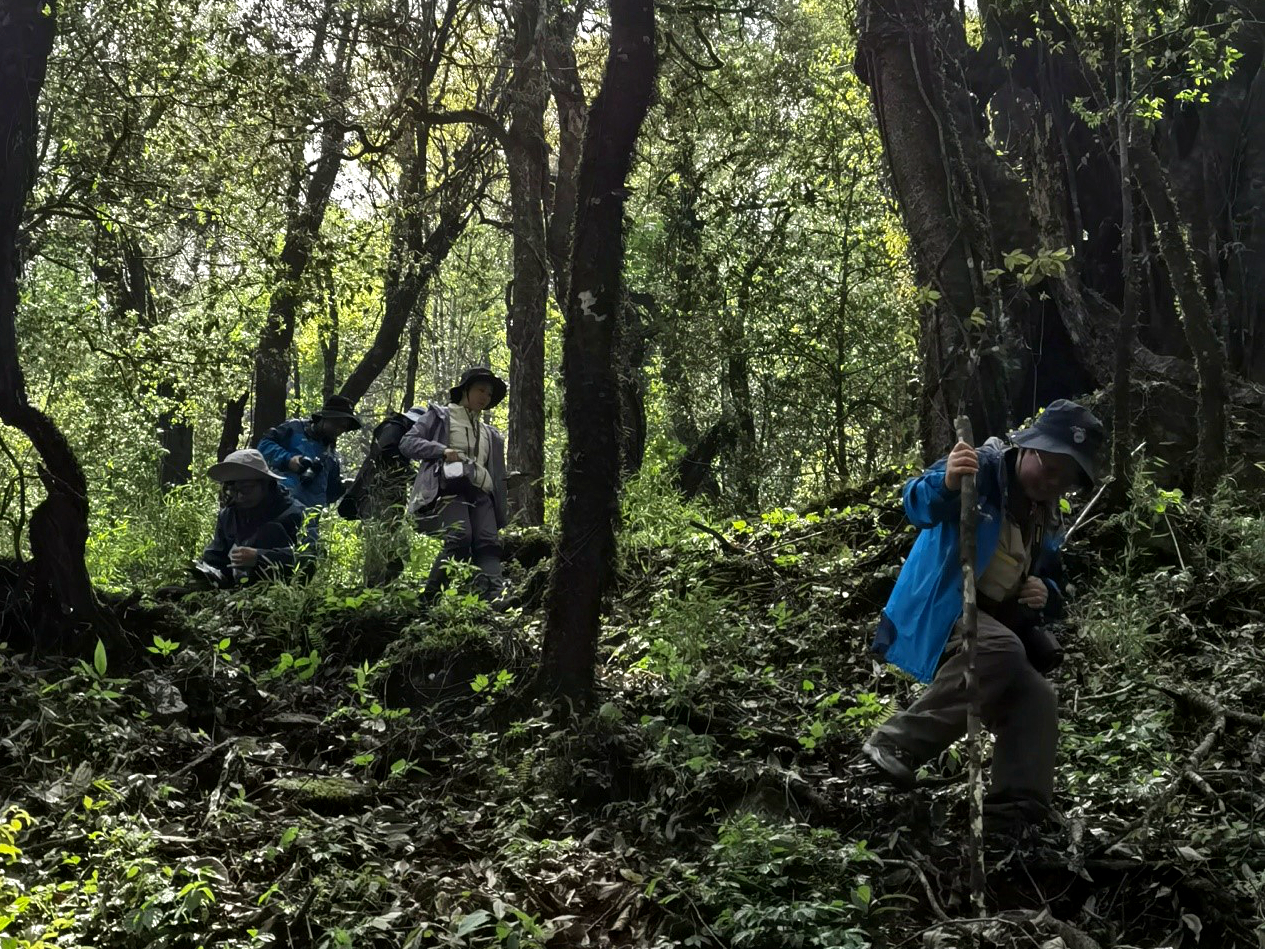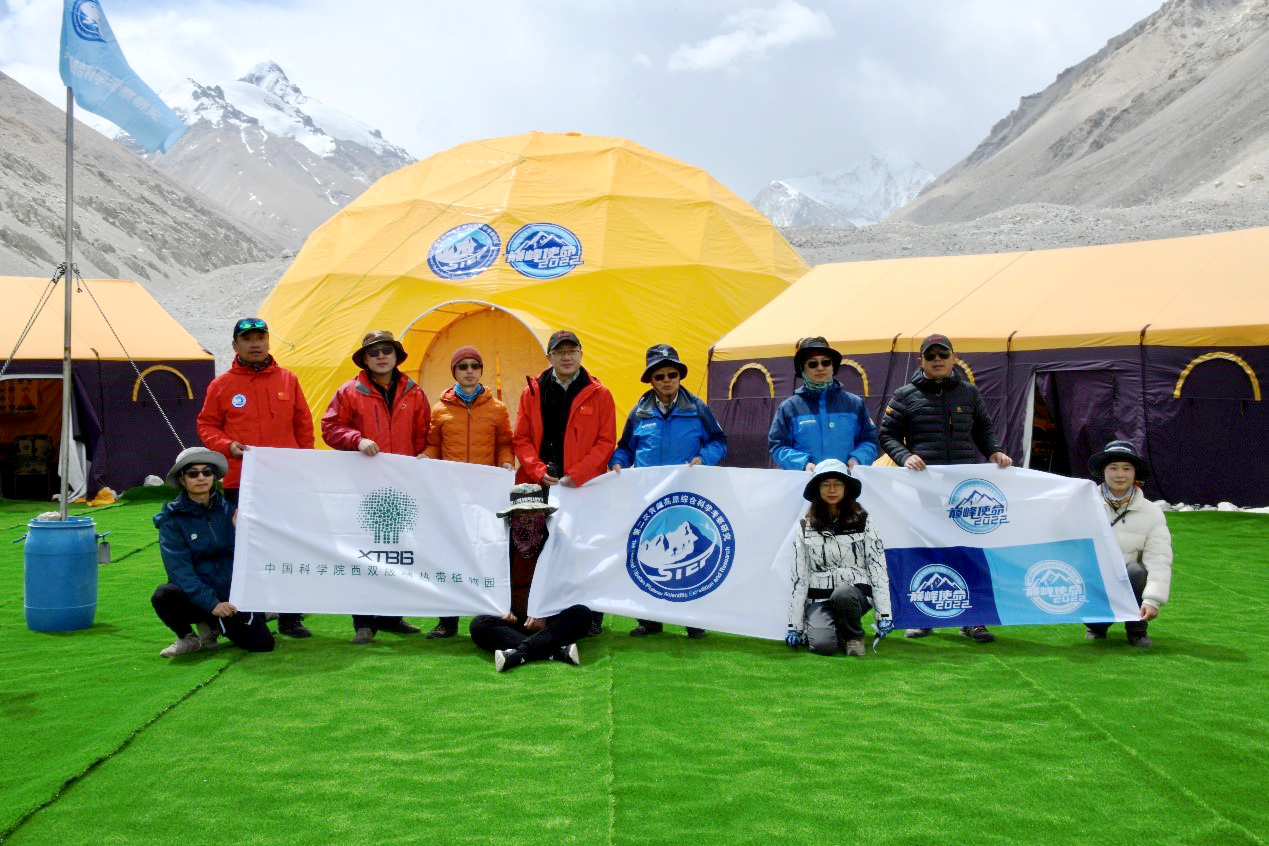Researchers from Paleoecology Group of Xishuangbanna Tropical Botanical Garden (XTBG) have recently participated in a new comprehensive scientific expedition on Mount Qomolangma, the world's highest peak on the China-Nepal border. The expedition is part of China's second scientific research survey on the Qinghai-Tibet Plateau, which started in 2017. More than 270 scientific research members (including 6 members from XTBG) from 16 squads are participating in the expedition. The 6 XTBG researchers mainly focused on plant diversity evolution and environmental change history around the Mount Qomolangma. “ We have collected a large number of fossils of paleobotany, pollen flora and rocks, and will carry on further analysis in the laboratory,” said Prof. Su Tao of XTBG. XTBG researchers also conducted field expeditions on the plant diversity at a vertical latitude gradient. They collected many samples of pollen flora and plant fossils at altitude ranging from 1650 meters to 5500 meters. “Our expedition is expected to provide scientific data about changes in plant diversity and environment in the Qomolangma area,” said Prof. Zhou Zhekun of XTBG. 
Collecting paleobotany and rock samples. 
Expediton in dense forest. 
Researchers pose a photo. |



